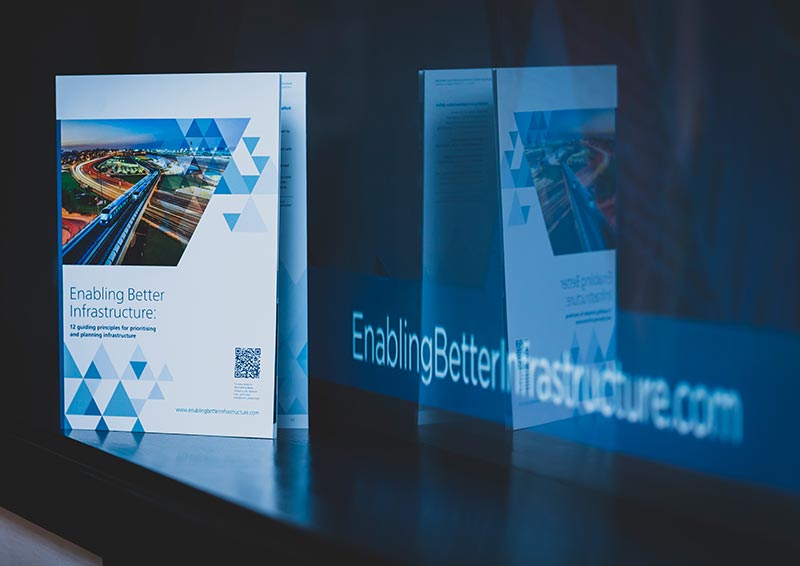
UK-based consultancy Mott MacDonald, the
Institution of Civil Engineers (ICE) and the UK Department of International
Trade on Wednesday launched the Enabling Better Infrastructure (EBI) global
policy programme.
Various launch events were held concurrently across
the world to launch the programme, which includes a report that sets out
high-level principles for governments to consider when planning infrastructure
programmes and during early-stage project preparation.
Oxford Economics estimates that the world will need
to invest $94-trillion in infrastructure up to 2040. This is 19% higher than
what will be delivered under current trends.
ICE aims to ensure that societies get the
infrastructure they need and can trust it will be delivered, using the
knowledge and collective action of global chartered membership.
ICE fellow and EBI steering group chairperson Michael Bear comments that, if
the world wants to realise the United Nations’ Sustainable Development Goals by
2030, it will need better infrastructure.
“The SDGs have created a blueprint for a world in
which we protect our planet’s ecosystems while making sure that people can
flourish. There can be no sustainable development without connectivity, clean
water, sanitation, low-carbon energy and a host of other services, which are
all underpinned by infrastructure.”
However, he notes that the challenge to realise
ambitious infrastructure investment programmes in countries globally has been
how to transform a vision into a plan that is both deliverable and achieves the
expected benefits.
Bear explains that, across the world, there are
common issues being faced by decision-makers: the need to address climate
change and its effects, the need to manage rapid urbanisation and demographic
shifts, and the need to take advantage of the opportunities brought about by
digitisation and new technology to boost economies.
Achieving these goals will increasingly require new
and repurposed infrastructure.
It will be the first time for many governments to
address these issues in a strategic way.
The EBI programme seeks to create an online
resource hub that shows the different approaches that have been taken to
infrastructure planning and delivery, instead of leaving it up to governments
to reinvent the wheel.
“No one country has the monopoly on good ideas, so
bringing together examples and learnings from across the world, we hope to
increase the likelihood of decision-makers getting it right the first time,”
Bear states.
EBI COMPONENTS
EBI representatives have conducted interviews with
practitioners from around the world and drew insights together in a report.
Bear says the report will be useful to government
officials, financial institutions, private infrastructure developers and
infrastructure consultants and contractors.
It draws on international best practice to describe
three stages of national infrastructure planning, including establishing a
national vision for infrastructure, conducting a national infrastructure needs
assessment and creating a national infrastructure strategy.
The report further provides insight and advice on
six key aspects of the enabling environment for national infrastructure
planning. These aspects are the institutional framework, fiscal capacity and
private finance, data to support decision-making, stakeholder buy-in and
consultation, legal and regulatory frameworks and human capacity and capability
requirements.
To complement the insights in the report, ICE has
created a resource hub to signpost useful resources from around the world. The
institute will continue to share new insights and case studies from members
that participate in the EBI programme.
“The resource hub and wider programme will be continually
reviewed and developed to ensure decision-makers have ongoing support. The hub
will be developed so that if the resources prompt questions, a mechanism for
providing answers will be in place,” Bear explains.
The wider programme will include the hosting of
‘insight development events’ across the world, which will ensure the collation
of case studies around the 12 guiding principles within the EBI report
continues.
EBI’s 12 guiding principles start off with
identifying strategic objectives. Bear says governments need to start with a
clear view of what economic, social and environmental effects they want to
achieve for their country.
“A national vision must be truly national. Wide and
inclusive stakeholder engagement will be needed to establish buy-in to a
long-term view of the nation’s needs.
“A good vision homes in on the specifics of a
country’s situation. We found, for example, that South Africa is dealing with
the legacy of apartheid, oil-rich States are focusing on diversifying their
economies and the Netherlands needs to manage intense competition for land use.
“Objectives also change over time. Over the last
half-century, Singapore and Hong Kong have moved from focusing on basic
services and taking people out of poverty to enhancing the quality of the urban
environment and environmental sustainability,” Bear points out.
He concludes that the EBI programme does not provide a perfect off-the-shelf model that all countries should try to follow, but rather provides the backbone of a strategic infrastructure planning process that can help to achieve national goals. http://www.engineeringnews.co.za/article/global-policy-programme-helps-govts-get-infrastructure-development-right-the-first-time-2019-12-04
More news
- PART 2: HARNESSING THE POTENTIAL OF HIGH SULPHUR FLY ASH IN CONCRETE PRODUCTION
- PART 1: HARNESSING THE POTENTIAL OF HIGH SULPHUR FLY ASH IN CONCRETE PRODUCTION
- PART 2: DESIGN AND CONSTRUCTION OF SLAB-ON-GROUND: APPLYING ACI 318
- DESIGN AND CONSTRUCTION OF SLAB-ON-GROUND: APPLYING ACI 318
- DOK-ING’s innovative electric mining equipment unveiled at ElectraMining

